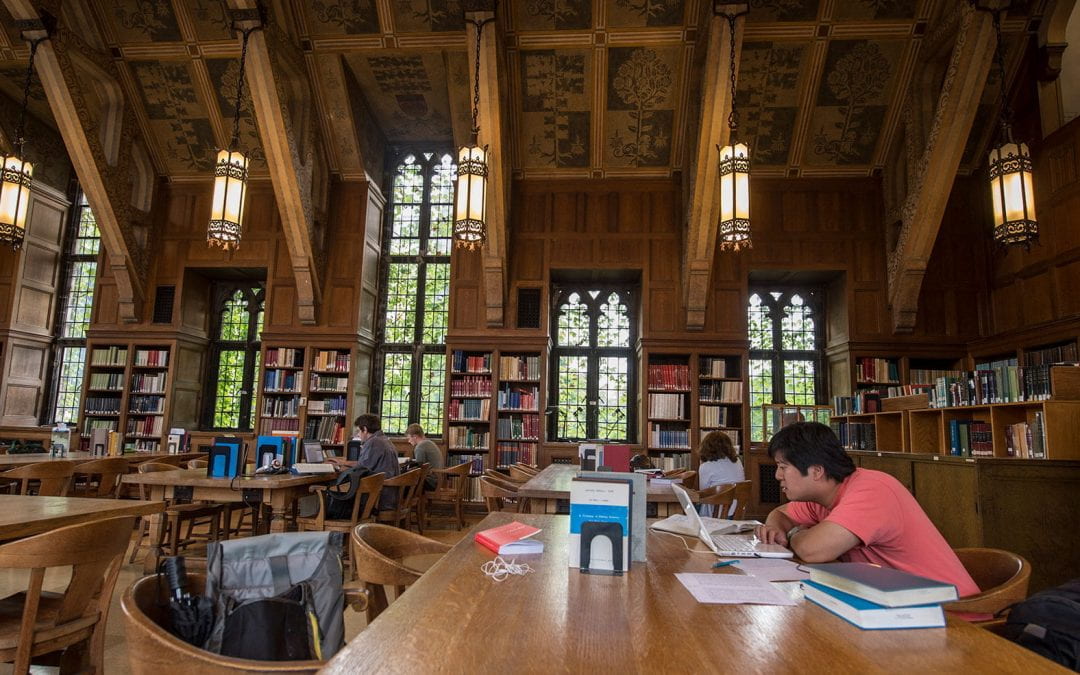Lee Jasperse is a fourth-year PhD student in the English Department. Our editors asked Lee about the transition to online teaching as a graduate student at the start of the COVID-19 pandemic in Winter 2020, and sought his opinion about the future of distanced learning in the 2020-2021 academic year.
What kind of training and support did you receive from your department or the University about remote learning?
LJ: The Humanities Division made a bunch of pedagogical trainings available to us. These were helpful in providing a sense of normalcy to the remote learning process, although they targeted instructors of record primarily. Fortunately, the English Department, and especially the department chair, stepped up to affirm and encourage us in this uncertain environment. The feeling that the department had my back really helped me to be flexible and confident setting out upon this uncharted terrain.
In particular, the department hosted a series of roundtables in which faculty discussed how their work and teaching had been impacted by the pandemic. This really helped me draw from others’ experiences to help me begin to forge a sense that “Doing your best right now is enough.”
In what ways did the move away from in-person learning alter your lesson planning, discussion sections, and overall interaction with your students?
LJ: Because several of my students were in drastically different time zones and lacked access to adequate internet, I really tried to shift the focus away from “live” discussion sections toward asynchronous forms of participation. This meant supplementing (optional) Zoom seminar attendance with a class blog and lots of reading prompts to help students find their footing in a really disorienting historical moment.
What kinds of challenges did distanced learning impose on your own academic work?
LJ: Practically, distanced learning was difficult in that I was cut off from access to library resources. I couldn’t just take a quick jaunt to the library to pick up the books I wanted. Also, all the extra time I spent teaching made it hard to find time for my own work. More profoundly, though, I found the biggest challenge to be a loss of academic community. In spite of my advisors’ efforts to create reading groups, etc. to make up for the loss of in-person community, it was hard to stave off the question of who and what my research was for.
Did your students experience any COVID 19-related challenges that required accommodations or assistance?
LJ: Yes, in terms of accessibility. Thankfully, none of my students or their families ended up sick. However, students had issues with time zones and technology which required making pedagogy as light and flexible as possible. All of us were anxious and tired by everything going on, so making room for those feelings in the class environment was essential to cultivating what ended up being a really exciting classroom atmosphere.
How prepared do you feel for remote instruction in the 2020–2021 academic year?
LJ: I felt more prepared after having done it once already. One of the hardest parts about teaching in Winter 2020 was figuring out the right balance between synchronous and asynchronous teaching without becoming totally swamped with extra work. To be honest, I’m still not sure I’ve figured out the sweet spot, but I do feel more comfortable adapting to how things seem to be going and cutting out aspects of the syllabus that turn out to be cumbersome.
The Chicago Center for Teaching has a number of resources for remote learning to support faculty and student course instructors at the University of Chicago.


1 Comment